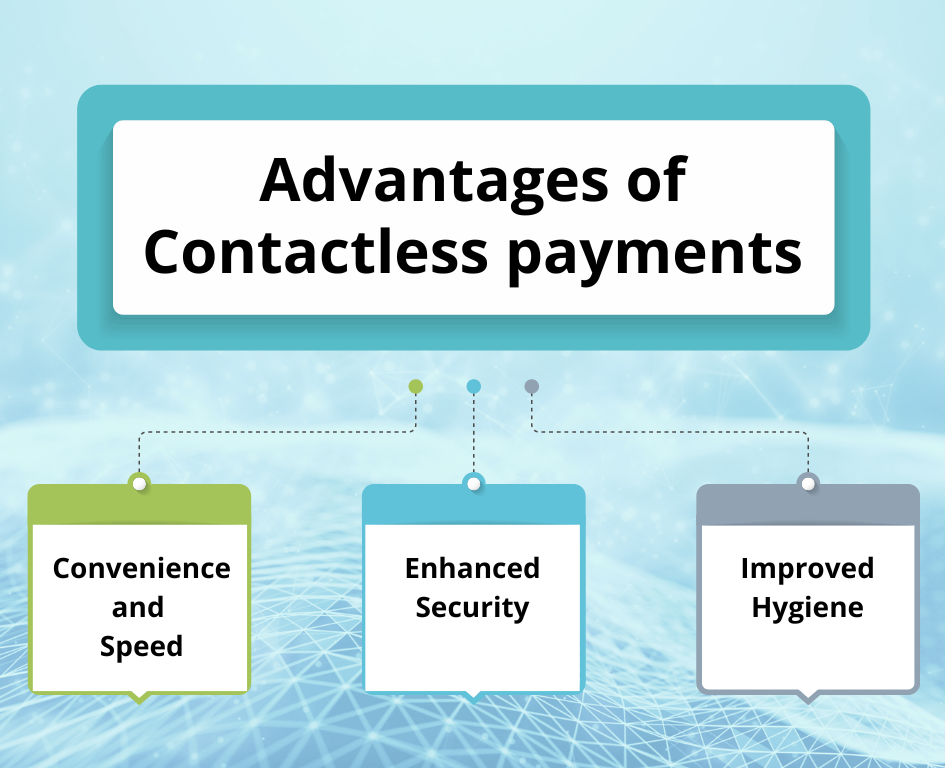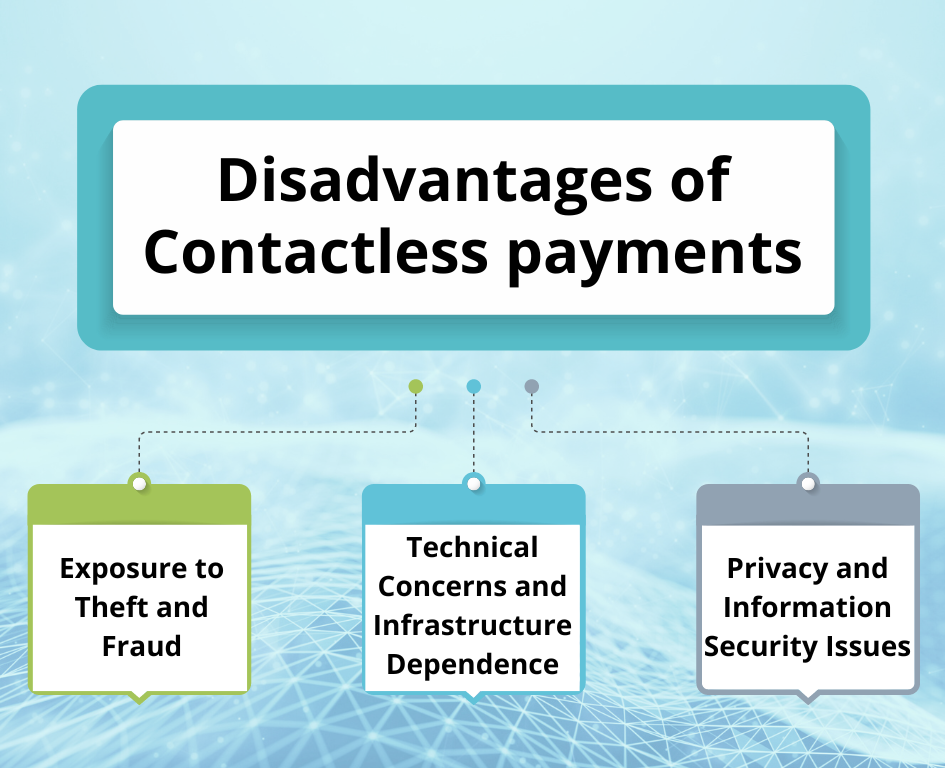
The Rise of Contactless Payments: Transforming the Way We Transact
Contactless payments have emerged as a revolutionary transaction method in today’s fast-paced digital world. With the development of technology and the growing demand for convenience, contactless payments have revolutionized how we work in business.
Table of Contents
Introduction
Understanding Contactless Transactions
Advantages of Contactless Transactions
Convenience and Speed
Enhanced Security
Improved Hygiene
Disadvantages of Contactless Payments
Exposure to Theft and Fraud
Technical Concerns and Infrastructure Dependence
Privacy and Information Security Issues
The evolution of contactless transactions
Contactless Cards
Mobile Wallets
Wearable Technology
The Importance of Software in Contactless Payments
Integration of Point-of-Sale Technology
Web and Mobile Applications
Information Security and Compliance
FAQs
Conclusion
How Can DataVision Help?
Introduction
Contactless payments have emerged as a revolutionary transaction method in today’s fast-paced digital world. With the development of technology and the growing demand for convenience, contactless payments have revolutionized how we work in business. As a banking software solutions provider, we recognize this transition’s significance and the opportunities it affords companies and consumers. This article examines the rise of contactless payments and how it reshapes the payment landscape from our perspective.
Understanding Contactless Transactions
Payments made by touching or waving a card, smartphone, or wearable device near a contactless-enabled point-of-sale (POS) terminal are called contactless payments. This technology employs near-field communication (NFC) to enable contactless, secure, and convenient transactions. Contactless payments offer a faster and more seamless payment experience by eliminating the need for currency and traditional card swiping.

Advantages of Contactless Transactions
Convenience and Speed
Convenience is one of the principal advantages of contactless payments. In seconds, transactions can be concluded with a simple tap or wave. This results in a speedier and more efficient checkout process, as customers no longer have to rummage through their wallets or count change. This results in decreased wait times enhanced customer satisfaction, and increased business productivity.
Enhanced Security
Compared to traditional payment methods, contactless payments offer enhanced security features. Each transaction generates a unique code transmitted securely, reducing the possibility of fraud and counterfeit transactions. In addition, contactless payments frequently necessitate biometric verification or a personal identification number (PIN), adding a security layer. At DataVision, we prioritize data security and work to ensure that our payment solutions adhere to the utmost security requirements.
Improved Hygiene
The recent global pandemic has even further underscored the significance of hygiene and minimizing physical contact. In this context, contactless payments have become vital as they eliminate the need to handle currency or touch payment terminals. It promotes a cleaner and safer environment and instills customers who confidently prioritize health and safety. Our software solutions accommodate these evolving requirements and equip businesses with the means to accept contactless payments.

Disadvantages of Contactless Payments
Although contactless payments have a number of advantages, it is essential to recognize their potential drawbacks.
Exposure to Theft and Fraud
Due to their reliance on wireless technology, contactless payment transactions are susceptible to larceny and fraud. Using vulnerabilities in NFC systems, criminals can intercept or clone payment data. Card information can be accessed without permission using skimming devices or malware. Additionally, if a contactless-enabled device is lost or stolen, unauthorized transactions may be conducted without additional verification.
Technical Concerns and Infrastructure Dependence
Contactless payments rely largely on stable infrastructure and technology. Customers may be unable to make payments if disruptions in network connectivity or technical problems impede transactions. Moreover, contactless payments require merchants to have POS systems that are compatible. In regions with outdated or insufficient payment infrastructure, contactless payments may not be a viable option, causing consumers and businesses inconvenience.
Privacy and Information Security Issues
The pervasive implementation of contactless payment transactions has raised privacy and data security concerns. Every time a contactless payment is made, transaction data, including purchase information, is collected and stored. This information can lead to identity theft, financial fraud, and intrusive profiling if it falls into the wrong hands or is mismanaged. Consumers must have faith in
The evolution of contactless transactions
Contactless Cards
With the introduction of contactless cards, contactless payments at first gained popularity. These cards, which contain an NFC device, enable users to make payments by tapping their cards against a contactless terminal. Rapidly gaining popularity, many financial institutions now issue contactless cards as a standard feature. This pervasive adoption has paved the way for future developments in the ecosystem for contactless payments.
Mobile Wallets
The proliferation of devices and mobile applications has contributed to the expansion of mobile wallets. Mobile wallets are digital applications enabling smartphone users to store their payment card information securely. These wallets employ NFC technology, allowing users to make contactless payments by holding their devices close to a contactless POS terminal. Apple Pay, Google Pay, and Samsung Pay are well-known mobile wallets. Our software solutions seamlessly integrate with these mobile wallets, enabling businesses to offer mobile payment options to their consumers.
Wearable Technology
Incorporating payment capabilities into wearable devices is a significant advancement in contactless payments. Smartwatches, fitness monitors, and other wearable devices now include contactless payment capabilities, enabling users to complete transactions with a flick of the wrist.
Wearable devices offer portability and convenience, appealing to consumers who prefer hands-free payment methods. These devices employ NFC technology, similar to contactless cards and mobile wallets, allowing users to conduct secure and expedient transactions while on the move.
The Importance of Software in Contactless Payments
As the demand for contactless payments increases, software solutions allow businesses to acclimate to this changing environment. Here are a few key areas where software solutions have a substantial effect:
Integration of Point-of-Sale Technology
For businesses to accept contactless payments, their POS systems must contain the necessary software and hardware. Banks offer seamless integration of contactless payment capabilities into existing POS systems or offer businesses new software solutions tailored to contactless payments. This integration enables businesses to receive payments and provide a seamless experience for customers.
Web and Mobile Applications
In addition to tangible point-of-sale terminals, companies can utilize software solutions to create mobile and web applications that support contactless payments. These applications offer a user-friendly interface for consumers to make payments with their smartphones or other mobile devices. By providing contactless payment options through specialized applications, businesses can enhance the consumer experience and make transactions more convenient.
Information Security and Compliance
With the rise of contactless payments, protecting sensitive consumer data is paramount. Software solution providers implement stringent security measures to save payment information and adhere to industry standards and regulations. These options include data encryption, secure payment gateways, and compliance.
FAQs
1: Are contactless payments secure?
Yes, contactless payments are secure. They employ sophisticated encryption and tokenization techniques to safeguard sensitive data. Moreover, contactless payments frequently necessitate additional authentication methods, such as biometric verification or PIN entry, adding an extra security layer.
2: What are the advantages of contactless payments for small businesses?
There are numerous advantages to contactless payments for modest businesses. They facilitate quicker and more convenient checkout, increasing consumer satisfaction. Additionally, contactless payments reduce the need to handle currency, reducing the risk of theft and errors. Further, accepting contactless payments demonstrates a commitment to modern technology and improves the business’s overall image.
3: Can I accept contactless payments with my current point-of-sale system?
Existing POS systems can frequently be upgraded to support contactless payments. Integration options provided by software solution providers enable businesses to add contactless payment capabilities to their existing systems. However, depending on the age and compatibility of the current system, it may be necessary to upgrade to a modern POS system to support contactless payments completely.
4: Are there transaction limits associated with contactless payments?
he transaction limits for contactless payments differ by country, financial institution, and card type. In most cases, a maximum transaction limit is imposed for security purposes. However, these limits are typically higher than the average purchase amount, making contactless transactions possible in most situations.
5: Can contactless payments be used internationally?
Yes, contactless payments can be made internationally in countries that support contactless technology. However, you must ensure that your payment card or mobile wallet is compatible with the country’s contactless infrastructure. The global compatibility of most major credit cards and mobile wallets makes it advantageous for travelers to make contactless payments abroad.
6: What fees are associated with contactless payments?
Typically, the payment service provider or financial institution that issues the payment card determines the fees associated with contactless payments. Contactless payments typically incur the exact costs of traditional card transactions. Verifying with your payment service provider or financial institution is recommended to determine whether contactless payments are subject to specific fees or charges.
Conclusion
The rise of contactless payments has revolutionized how we conduct business, offering businesses and consumers convenience, speed, and enhanced security. As a software solutions provider, we recognize the significance of this transformation and endeavor to develop cutting-edge solutions that enable businesses to adopt contactless payments seamlessly. By integrating contactless payment capabilities into their systems, companies can improve customer experiences, expedite operations, and maintain a competitive advantage in a world that is becoming increasingly digital.
Contactless payments are not merely a fad but a fundamental transaction transformation. Embracing this transformation and leveraging software solutions can provide businesses with new opportunities to flourish in the modern payments landscape.
How Can Datavision help?
We assist various financial institutions and global banks on their digital transformation journey. Our one-of-a-kind approach, which combines people, process, and technology, expedites the delivery of superior results to our clients and drives excellence. Several reputed companies leverage our proprietary suite of business excellence tools and services to unlock new growth levers and unparalleled ROI.
We support a range of financial institutions and global banks on their digital transformation journey. Our unique strategy, which blends people, process, and technology, expedites the delivery of outstanding solutions to our clients and promotes excellence. Several reputable firms utilize our exclusive portfolio of business excellence tools and services to unlock new growth levers and achieve a ROI that is unmatched.
Datavision stands proudly as a prominent banking software solutions provider, recognized for our unwavering commitment to excellence in the industry. We have earned our esteemed reputation by consistently delivering cutting-edge core banking software, catering to the needs of both retail and corporate banking software sectors. At Datavision, our mission is clear: to provide our clients with the best banking software products, ensuring that they stay ahead in an ever-evolving financial landscape. We take pride in serving our prestigious clients and look forward to continuing our journey of innovation and excellence.
Our portfolio of banking software product and services include:
Core Banking Solutions: | FinNext Core | Banking: | FinTrade | EasyLoan | MicroFin |
Digital Banking Solutions: | IBanc | MobiBanc | MBranch | FinTab | FinSight |
Risk & Compliance: |FinTrust |
Want to know how our team of experts at Datavision provides customizable, scalable, and cost-effective banking software products and solutions to our esteemed clients? Visit us for more information.